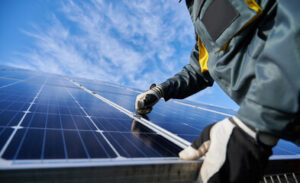Solar Panel Installation is a major undertaking and requires careful planning and preparation. Before the installer begins work, it is important to complete the paperwork and determine which equipment is required. Then, the installer will place the order for equipment through the primary distributor. This process may take several days, so you should check the status of your paperwork regularly.

There are several considerations that you should keep in mind before installing solar panels on your roof. First, you should consider the type of roof that you have. It is advisable to choose panels made from Crystalline Silicon since they generate a high amount of electricity. These panels can even provide up to 20% efficiency.
Secondly, you need to take into account the orientation of your roof. The orientation of your roof will determine how much sunlight will reach the panels and how many panels you will need. Most professionals recommend that you install solar panels on a south-facing roof. However, this depends on the size of your roof and the slope of the roof.
Once you have determined the orientation of the panels, you need to drill holes. Make sure that you mark the holes so you can find them easier. You can also use fishing wire to guide you when drilling. Finally, you will need to attach the solar panels to the inverter. The installation process is very simple, but you need to follow all of these steps properly.
Metal roofs are also suitable for solar panels. If you have a standing seam metal roof, you do not need to drill holes. You can use waterproofing sealant to prevent moisture from penetrating through the metal. This will help keep your roof dry and prevent damage from the solar panels.
There are several methods to install solar panels on a roof. The most common method is to install solar panels directly on the roof. The best option for this type of roof is to have a southern-facing roof. This will help the panels work during winter when sunlight is not as strong. Additionally, you should install the panels in such a way that they will not create a lifting effect. Furthermore, you should make sure that there is enough space for the screws to penetrate the roof.
Before installing solar panels, you will need to find the right racking system and locate the rafters on the roof. After that, you can place the solar modules on the racks. Then, you can secure them to the rails with clamps. You can also purchase tilt legs to adjust the angle of the solar panels so that they can get maximum exposure to sunlight.
There are several types of solar racking systems. Some of these systems use shared or standard rails. This type of racking system is typically easier to install than others. Some solar installers use proprietary rails, which are made of metal with a raised stop to catch the panels. The brackets clip into the rails and fasten the solar panels with end or mid clamps.
The price of solar racking varies depending on the type of racking, the amount of equipment used, and the labor required to install it. Most rooftop systems are less expensive than ground-mounted ones, and rooftop mounts make use of the roof structure already there. However, ground-mounted systems are much easier to access, and they eliminate the safety hazards of working on a roof.
When choosing a solar racking system, it’s important to remember that different roofs have different load limits. Flat roofs, for example, usually have a low load limit, so the racking system must have minimal load limits. If the solar panels aren’t properly secured, they can easily fall from the roof.
A racking system is an essential part of solar installation, but it only represents a small percentage of the total cost. According to the National Renewable Energy Laboratory, the cost of solar racking is about $0.10 per watt, which makes it a relatively inexpensive component of a solar system.
A solar tracker maximizes solar energy production by adjusting the modules’ orientation to the direction of the sun. The system is useful for people who live in areas with short winter or summer days. In such cases, a solar tracker can help to increase the amount of energy produced by solar panels by one-third during these periods.